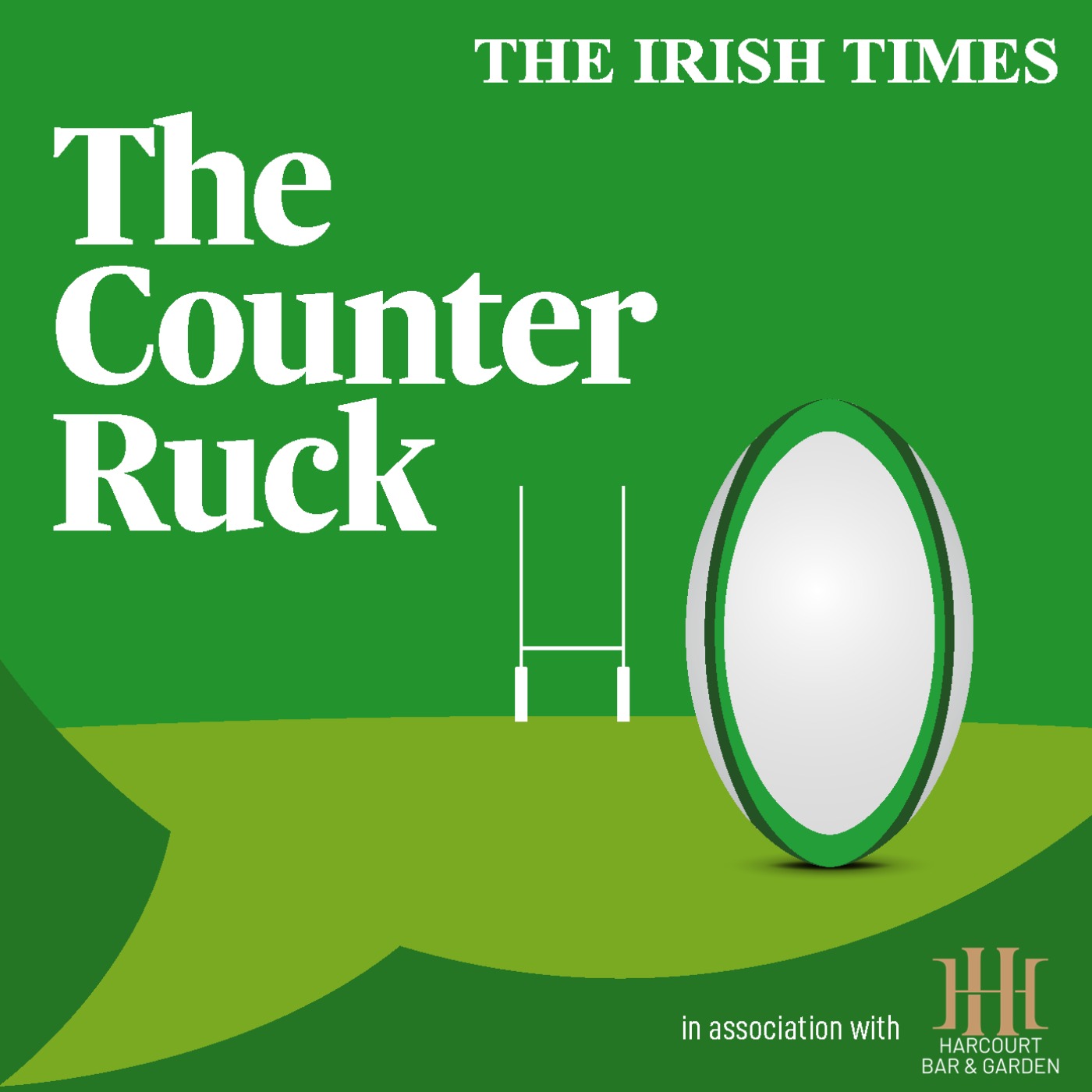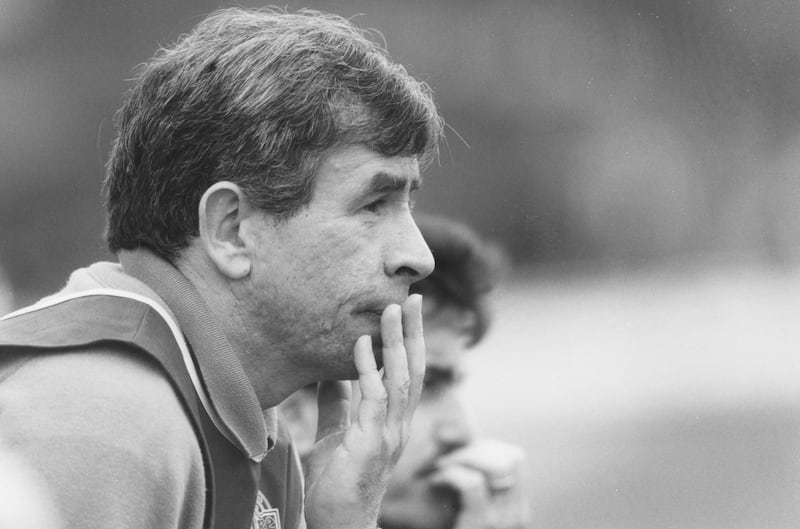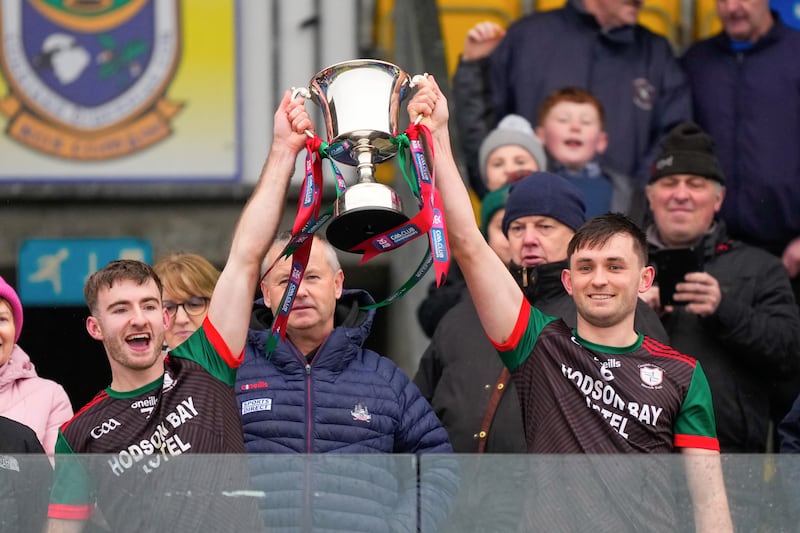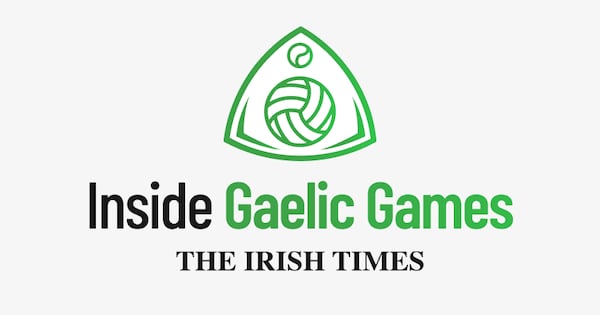This is the 25th championship since the tyranny of sudden death was ended in championship football – allowing that its brief reinstatement was one of many unhelpful consequences of the pandemic in 2020 and ’21.
The new qualifiers coincided with the introduction of a calendar-year league, compressing the intercounty season into something resembling a coherent schedule.
There was immediate impact on the championship. Galway, All-Ireland finalists from the previous year, had fizzled out in a Connacht semi-final in June. They would go on to become the first ‘qualifier’ All-Ireland winners in the new system’s inaugural year, 2001.
Hurling had already taken that plunge and Offaly three years previously became its first champions to have lost a match along the way – the 1998 Leinster final against Kilkenny.
Scotstown win thrilling Ulster semi-final after dramatic penalty shoot-out
Ballygunner the undisputed kings of Munster as they see off Éire Óg to claim sixth provincial crown
St Brigid’s live off scraps to scoop another Connacht title
St Ergnats Moneyglass to meet Kilkerrin-Clonberne in All-Ireland club final
[ Kerry blitz Armagh and again prove masters at confounding expectationOpens in new window ]
The significance in football was that counties coul now resurrect an apparently failed campaign. It worked best for teams who already had an All-Ireland and knew the ropes but it was now possible to apply the hard-learned diagnostic of defeat in the same season.
In the format’s first 10 years, the majority of All-Ireland champions would travel that route. That changed in the last decade, largely because of Dublin’s unbeaten progress to seven All-Ireland titles but also the provincial supremacy of other champions, Donegal and Kerry.
The pace of change has quickened since 2010 with the introduction of round-robin fixtures as part of the Sam Maguire structure. Teams are now getting used to losing along the way – to the extent that going into last weekend’s quarter-finals, all eight counties had already been beaten.

Which Irish players have impressed for the Lions?
So evenly matched have most of the teams been that it was well on the cards one might make a decisive move and by consensus that was Kerry.
Post-match reaction was full of references to the county’s previous experiences of processing defeat and rebounding: literally, what doesn’t kill you makes you stronger.
[ Turnstiles click for a game transformed and the most open championship in decadesOpens in new window ]
The great Down team of the early 1990s won two Sam Maguires. The second in 1994 was a case study with contemporary relevance. As 1991 champions, Down had two terrible seasons living up to this ground-breaking status (they had been the first winners from outside Munster and Leinster in 23 years).
Eventually, manager Peter McGrath reconfigured the team: Conor Deegan from full back to centrefield, Barry Breen from centrefield to centre back, James McCartan from corner forward to wing forward et cetera. The varied responsibilities helped to reignite their challenge.

But it needed a significant test, a stone to whet the knife. That came in the first match in Ulster, against then All-Ireland champions Derry, who had beaten them with increasing severity in the previous two years. That provincial quarter-final draw hung over Down like a memento mori from the moment it was made in the autumn of 1993.
In the event, they survived a dressingroom bust-up, the departure and return of players to win one of the great matches of the decade. As soon as Down had done that, they were again All-Ireland contenders and duly won the title the following September.
Compare that with Galway in 2001, who made similar switches to shake up the team: Michael Donnellan from half forward to centrefield, Tomás Mannion from corner back to centre back and Joe Bergin from centrefield to wing forward. The difference in the strategies was that the late John O’Mahony was able to execute his in one season.
Galway’s whetting stone was the third-round qualifier against Armagh, who had taken champions Kerry to a replay in the previous year’s All-Ireland semi-final. It was a terrific contest, won after an Armagh comeback that threatened to derail their opponents, when Donnellan blocked a kick, raced forward and laid it off to Paul Clancy, who pointed the winner with 35 seconds remaining.
Four matches later, they had regained the All-Ireland.
Kerry’s point of reference at the weekend was the 2009 quarter-final against Dublin by which stage they had lost in Munster to Cork and suffered a near-death experience in Tralee when only a missed penalty by Sligo saved the home side from defeat.
Then they were losing to Antrim at half-time in the next round and just level with an hour gone before winning by a goal.
Jack O’Connor, who had dropped Colm Cooper and Tomás Ó Se that week, was dismissive of media speculation about the disciplinary measure and compared to last weekend, relatively Zen about the coverage.
“It actually wasn’t a worry, believe it or not. The only thing I was worried about was that the squad would stick together. That’s all that matters, really. The stuff that you fellas write doesn’t affect us as much as you think it does.”
Dublin proved Kerry’s whetting stone 16 years ago just as Armagh did on Sunday. The 17-point defeat, characterised by Pat Gilroy’s description of his team as “startled earwigs” provide blast-off for Kerry’s All-Ireland and a productive rethink for the Dubs.
Of course, this season is not over yet. Kerry’s delivery of a masterclass on Sunday may have made them favourites but no verdict on the 2025 championship can be made until the end of July.
We don’t yet know for certain where the Kerry resurgence will lead. In the semi-final, they face Tyrone, a county that has twice won the All-Ireland by beating Dublin in the quarter-finals, as they did on Saturday, and subsequently, Kerry.
As Kieran McGeeney prophetically replied when asked were Armagh better than last year after they had beaten Dublin: “As you know, it’s like everything else, all the writing’s done at the end. No matter what I say now, no matter what you say, it doesn’t make any difference. It’s always the final chapter when it comes to sport that determines the content of the book.”
Now, read on.
















